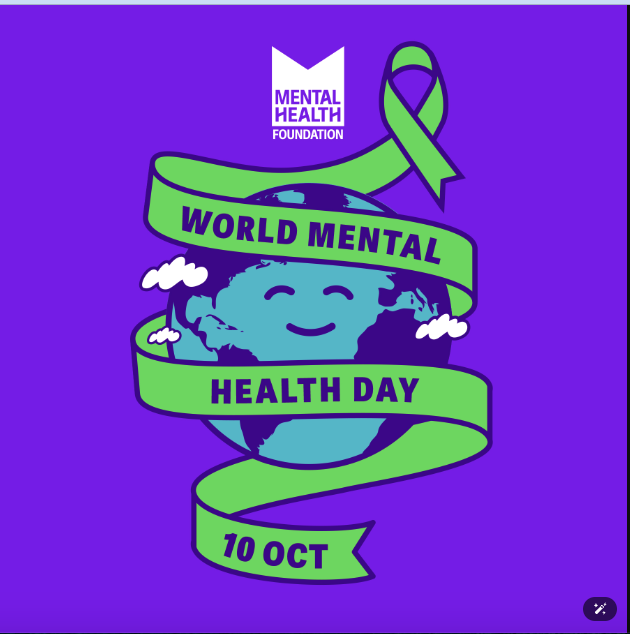In the UK’s evolving social work profession, the Advanced Social Work Practitioner plays a pivotal role in safeguarding vulnerable populations, guiding early-career colleagues, and shaping service delivery.
This blog offers a comprehensive overview of advanced-stage careers in social work, including qualifications, career progression pathways, and professional opportunities available in 2025.
Advanced Social Work Practitioners (ASWPs) are highly skilled, qualified social workers with significant experience in managing complex and high-risk cases. They demonstrate leadership within their teams, guide professional social work practices, and promote the well-being of children and adults across various settings.
Typically employed by local authorities, NHS organisations, or charities, these professionals are instrumental in:
Their authority in decision-making and support makes them essential in delivering person-centred care and influencing the future direction of the profession.

Becoming an Advanced Social Work Practitioner involves a structured progression through education and experience
Begin by securing a Social Work England-approved qualification such as a Bachelor’s or Master’s degree in social work. Registration with Social Work England is mandatory to practise.
Newly qualified social workers (NQSWs) must complete the ASYE, which offers structured supervision, reduced caseloads, and regular assessments to consolidate learning and build professional confidence.
Following ASYE, accumulate several years’ experience in statutory settings, handling increasingly complex cases across adult or children’s social care.
Advanced practitioners often undertake postgraduate qualifications, such as an MSc in Advanced Social Work Practice. These courses focus on leadership, supervision, and specialised practice areas, enhancing one’s ability to manage complex cases and support teams effectively.
Progression requires meeting the advanced level competencies defined in the Professional Capabilities Framework (PCF). These include critical reflection, leadership, and complex decision-making skills. Evidence of these abilities may include leading projects, mentoring colleagues, and contributing to policy development.
With qualifications and experience in place, candidates can apply for advanced practitioner positions. These roles typically involve supervising staff, managing high-risk cases, and leading practice development initiatives.
Advanced Social work Practitioners have access to a wide range of career development opportunities. These include horizontal and vertical progression within social work roles, as well as into specialist or leadership positions.

In 2025, continuous professional development (CPD) remains essential for maintaining competence in professional social work. Opportunities for CPD include:
The Practice Educator Programme is especially important for those looking to take on mentorship roles or transition into supervisory positions.
The demand for experienced social workers and advanced practitioners continues to grow. This demand is fuelled by complex societal needs, increased awareness of safeguarding, and an ageing population requiring more adult social care services.
To excel in an advanced practitioner role and foster professional growth, consider the following:
Advanced Social work Practitioners in the UK are at the heart of safeguarding and service innovation. With the right qualifications, experience, and commitment to professional development, social workers can transition into roles that influence not only their teams but the broader direction of social work practice.
For those ready to take the next step in their social work career, advanced practice offers an opportunity to lead, support, and shape the future of the profession. Whether you’re an experienced social worker or exploring your first progression, now is the time to invest in your development.
Join Verovian Social Work Recruitment Agency today for exclusive access to top advanced practitioner roles, expert career guidance, and ongoing professional support tailored to your goals. Let’s build your future.
Becoming a registered social worker in England is your gateway to a rewarding career supporting individuals, families, and communities. Whether you’ve just completed your qualifying degree or are returning to practice after a break, registration with Social Work England (SWE) is mandatory. This post will guide you step‑by‑step through the SWE registration process—from preparing your documents to maintaining your registration through Continuing Professional Development—so you can start practising legally and confidently.
Social Work England (SWE) is the statutory regulator for social workers in England. It maintains the public register of qualified social workers and sets the standards of education, training, conduct, and performance that protect service users and strengthen public trust in the profession. Registration is compulsory: practising without being on the SWE register is a criminal offence.
To register with SWE, you must demonstrate:
Approved qualification
A BA/BSc in Social Work or a postgraduate Diploma/MSc in Social Work from a UK university. You may apply to join the register once your course provider has confirmed your successful completion and sent SWE the pass list of successful candidates. SWE requires this list to verify your qualification and cannot progress your application without it. Providers typically notify you when they’ve dispatched the pass list, usually about five working days after results are formally confirmed.
Good character and health
Full disclosure of any cautions, convictions, or health issues that could affect your ability to practise safely.

Visit the SWE registration page and set up your secure online account to begin.
Enter your personal details, education history, and employment background. Provide declarations about character and health.
Please upload certified copies of your qualification certificates and academic transcripts, a colour photographic ID, along with proof of address, details of any criminal convictions or cautions that are not ‘protected’, information on any health conditions that could affect your practice, and any fitness-to-practice determinations issued by a regulatory body.
Pay the applicable fee to secure your place on the register.
SWE aims to process complete applications within 10 working days (excluding weekends and bank holidays). If additional information is required, SWE will contact you via the messaging centre of your SWE account, and you must respond within 28 days. Please note that providing further details may extend the overall processing time.
Once approved, you’ll receive your registration number and be added to the public register and can legally practise as a social worker in England.
Registration with Social Work England is your essential first step toward practising safely, legally, and effectively in England. By following SWE’s process and maintaining your CPD, you not only protect the public but also enhance your professional standing.
At Verovian Social Recruitment Agency, we offer exceptional social work opportunities across the UK—from local authority placements and charity roles to pioneering community initiatives. Whether you’re looking for full-time, part-time, hybrid, or fully remote positions, our specialist consultants will match you with roles that align with your skills and ambitions. Register with Verovian Social Recruitment Agency today to explore our latest vacancies and take the next step in your social work career.
Working from home offers flexibility and freedom, but it also comes with its fair share of distractions. From household chores to social media and the temptation to stay in pyjamas all day, maintaining focus can be a challenge. Without a structured office environment, it's easy for productivity to slip, leaving you feeling unmotivated and overwhelmed.
But working from home doesn’t have to mean struggling to stay on track. With the right strategies, you can create a productive routine, minimise distractions, and make the most of your working hours—without burning out.
In this blog post, we’ll explore practical strategies and innovative techniques tailored for social workers that will help you stay focused, organised, and maintain a healthy work-life balance. Get ready to uncover insights that can revolutionize your approach to remote work, ensuring you maximize efficiency without sacrificing comfort. Ready to reclaim your time? Let’s dive in!
Let’s start with your workspace! Having a dedicated area for work is crucial for maintaining a healthy balance between your personal and professional life. When your home becomes your office, the boundaries between the two can easily blur. To prevent this, set up a specific workspace. Studies show that having a designated area can greatly enhance productivity and reduce distractions. Choose a quiet, comfortable spot with plenty of natural light to keep your energy levels up throughout the day.
Tip: Avoid working from your bed or sofa. Keeping your workspace separate from relaxation areas will help you shift between "work mode" and "rest mode" more effectively.
Now, picture walking into a space that feels just right—equipped with a cozy chair, good lighting, and all the tools you need at your fingertips. Make it inviting by adding personal touches, like a plant or a motivational poster, to keep the good vibes flowing. This is your productivity haven!
Social work can be emotionally demanding, and working from home makes it tempting to stretch your hours. However, this can lead to burnout. Set clear working hours and stick to them. Let family members or roommates know when you are unavailable, and use tools like calendars or notifications to mark your "do not disturb" times.
Routines can feel a bit mundane, but trust me, they’re game-changers! Setting a consistent schedule that mirrors your office hours can help you stay organised and productive. Start your day with a ritual that gets you into the right mindset—perhaps enjoying a cup of coffee while reading a book or doing a quick yoga session to stretch and boost your energy. When you begin your day with intention, you’ll find it much easier to dive into your tasks with focus and enthusiasm!
Time management is critical when you don’t have the structure of an office environment. Start your day by listing your top priorities, and separating urgent tasks from those that can wait. Set realistic goals for the day, and don’t forget to schedule in time for unexpected emergencies, which are common in social work.
Let’s face it: technology is your best friend in a hybrid role. Use tools like Zoom for virtual meetings and task management apps like Trello or Asana to keep track of your to-dos. Virtual meetings, e-signatures, and cloud storage for documentation not only save time but also improve efficiency.
According to a survey by Buffer, 94% of workers who moved to remote work during the pandemic stated that they preferred using digital tools to enhance productivity. The right tools can streamline your workflow and help you stay connected with your clients and colleagues, no matter where you are.
And remember, the goal is to enhance your productivity, not let technology overwhelm you! Choose what works best for you and keep it simple.
Social media can easily become a major distraction and a time thief if you let it, especially when you’re working from home. With constant notifications from Facebook, Instagram, Twitter, Pinterest, and Reddit buzzing on your smartphone, maintaining productivity can feel nearly impossible. To curb your social media addiction, start by turning off all notifications—you likely won’t miss anything important. Consider using a separate web browser exclusively for work tasks, ensuring you don’t log in to any social media accounts, which helps break the habit of checking for updates every few minutes. If you find your willpower faltering, install a web browser plugin to restrict access to social platforms during work hours.
Social workers often prioritise their clients’ needs over their own, but this can be counterproductive when working from home. Studies show that individuals who incorporate self-care routines into their day are more productive and less likely to suffer from stress-related issues. Make time for breaks, exercise, or even a short walk to refresh your mind.
When you're working from home, flexibility is your secret weapon. Client needs can change in an instant, so be ready to adapt your schedule as necessary. Embrace the unexpected and remind yourself that it’s okay to pivot when needed. At the end of each week, take a moment to reflect on what worked well and what could be improved. This self-assessment will help you fine-tune your approach and boost your productivity even further.
Last but not least, don’t forget about professional development! Use your remote hours to explore online courses or webinars that will enhance your skills as a social worker. Staying up-to-date on new practices and trends in social work can boost both your productivity and your sense of accomplishment.
Professional bodies like BASW (British Association of Social Workers) offer numerous online courses and resources tailored to social workers looking to enhance their skills while working remotely. You can also find valuable continuing professional development (CPD) opportunities through Social Work England's website.
Plus, connecting with professional organisations or peer groups can provide valuable insights and support as you navigate your hybrid role.
So there you have it, wonderful social workers! Working from home in a hybrid role doesn’t have to be a challenge. With a little creativity and intention, you can create a productive and fulfilling work environment.
By designing a dedicated workspace, establishing routines, and embracing technology, you’ll not only maximise your efficiency but also find joy in your work. Remember, you’re making a difference in the lives of others, and taking care of yourself is just as important.
Are you ready to take the next step in your social work career? At Verovian Social Recruitment Agency, we specialise in connecting dedicated social workers like you with rewarding opportunities. Whether you're looking for a hybrid role or a fully remote position, our team is here to help you find the perfect match.
Explore exciting job openings, access resources to enhance your skills, and join a community of passionate professionals. Let’s work together to build a brighter future for you and the communities you serve!
As a social worker, maintaining confidentiality and protecting personal data is essential to building trust with the individuals you support. Every day, you handle sensitive information, making it crucial to adhere to privacy standards that not only meet ethical obligations but also comply with legal requirements under data protection laws.
Failing to uphold confidentiality can result in serious consequences, including legal repercussions and a loss of trust from both service users and colleagues.
In this blog, we’ll provide an overview of confidentiality and data protection in social care, covering the legal frameworks, best practices for data management, and the role of technology in safeguarding sensitive information.
Confidentiality means safeguarding private data and sharing it only when necessary and with the right people. Maintaining confidentiality fosters trust, ensuring individuals feel respected and safe when receiving care.
Private data includes:
Protecting this information ensures compassionate, personalised care without fear of misuse or unauthorised disclosure.

The Data Protection Act 2018 aligns with the General Data Protection Regulation (GDPR), governing how personal data is processed and ensuring privacy rights. Social care professionals must follow key principles:
Non-compliance can lead to disciplinary action and legal penalties, emphasising the importance of strict adherence.
A breach occurs when private data is disclosed without proper legal or ethical justification. Consequences may include disciplinary actions, damage to professional credibility, and legal penalties. Organisations must report breaches to the Information Commissioner’s Office (ICO) and affected individuals promptly to mitigate risks.
While confidentiality is crucial, there are situations where disclosure is necessary:
Sharing Information Responsibly:
Transparency is key—social workers must inform individuals about how their data will be used and ensure they consent where possible.
Ongoing training helps professionals stay updated on data protection laws and best practices. Key areas of training include:
Recommended Training Resources:
Regular training ensures professionals handle personal information responsibly while staying compliant with evolving regulations.
Technology brings efficiency to social care but also presents challenges in maintaining confidentiality. As digital systems become more prevalent, professionals must follow rigorous security protocols to protect sensitive data.
To protect sensitive data, professionals should:
Following these protocols allows professionals to leverage technology while maintaining confidentiality.


Social workers must follow strict protocols to ensure that personal data is:
To further safeguard confidential information, professionals should adhere to best practices, including:
By following these protocols, social workers uphold both ethical standards and legal requirements for confidentiality.
Confidentiality in social care is not just a legal requirement but a vital component in fostering trust with individuals. Care professionals must stay updated on data protection legislation, adopt best practices, and ensure that personal details are handled securely.
By cultivating a culture of privacy and compliance, the sector can continue to provide high-quality, compassionate care while protecting the dignity and safety of those it serves.
Looking for flexible locum, contract, or permanent roles? We offer career growth, competitive pay, and a supportive work environment. Apply today and make a significant impact in social care.
Every year, World Social Work Day highlights the essential role that social workers play in building inclusive, just, and sustainable communities. On March 18, 2025, professionals from around the globe come together to celebrate their invaluable contributions and reaffirm their commitment to social justice. In a world of rapid change and evolving challenges, the work of social workers has never been more critical. This blog delves into the significant impact of the social work profession, examines its ongoing challenges and achievements, and showcases the inspiring events taking place to honor this day.
This blog will explore the history of World Social Work Day, reveal this year’s theme, highlight the exciting events that honour this important occasion, and discuss how social workers can champion intergenerational wellbeing.
World Social Work Day is an annual event established by the International Federation of Social Workers (IFSW) to celebrate and recognise the work and dedication of social workers worldwide. It provides a platform to advocate for human rights, social justice, and sustainable development.
Each year, the event adopts a theme that mirrors the evolving priorities of the profession. This year’s focus is on intergenerational solidarity for enduring well-being. The theme emphasises the vital need for social workers to forge connections across age groups, fostering inclusive societies, resilient communities, and sustainable environments. It honors the wisdom of our elders while empowering younger generations to address today’s challenges and shape a brighter future.
Intergenerational solidarity goes beyond mere coexistence; it’s about fostering genuine connections and mutual support between different age groups. This concept encourages not only the sharing of experiences and wisdom but also the equitable distribution of responsibilities, ensuring that both young and old benefit from each other’s unique perspectives. It paves the way for collaborative learning and growth, where the knowledge and life lessons of older generations empower younger individuals, and the fresh ideas and energy of youth invigorate the community. Ultimately, this cooperation builds resilient, inclusive societies that value every stage of life.


To strengthen intergenerational solidarity, social workers can:
For World Social Work Day 2025, leading professional bodies such as the British Association of Social Workers (BASW) and Social Work England (SWE) are hosting a series of events throughout March to celebrate and elevate the social work profession. These multi-day events offer invaluable resources and learning opportunities for social workers committed to making a lasting impact.
World Social Work Day 2025 serves as a powerful reminder that stronger societies are built when generations work together. By fostering respect, collaboration, and shared wisdom, we can create a future where all generations thrive.
As we celebrate this important day, let’s commit to strengthening intergenerational solidarity in our families, communities, and policies. By doing so, we contribute to enduring well-being and a more inclusive world for all.
At Verovian Social Work Agency, we understand that exceptional care begins with exceptional teams. Whether you're an employer seeking to hire top social work professionals or a dedicated professional looking for your next role, we're here to help. We connect organisations across the UK with a network of high-calibre social workers who embody compassion, integrity, and innovation.
Our comprehensive recruitment solutions ensure that both employers and professionals have access to the right opportunities and talent to make a lasting impact. Let us help you build a workforce that reflects your commitment to excellence and community well-being.
Contact us today to find the perfect match or discover your next career opportunity, and take the next step toward a brighter future.


In today’s fast-paced healthcare environment, hospital discharge planning has become a crucial part of patient care. The aim? To ensure that patients leave the hospital safely and are equipped with the resources they need to recover in the community. But what does this process really entail? And why is the role of social workers so vital in making it work?
Let’s explore the critical role of hospital social workers in discharge planning, highlighting the essential steps involved, common challenges, and strategies to overcome them. Whether you’re an experienced professional or just starting out, this guide will provide you with the insights and tools you need to thrive in this vital area of healthcare.
Hospital discharge planning is the process that ensures patients are transferred from hospital to home or another care setting in a way that promotes their safety and well-being. It’s not simply about sending a patient home; it’s about making sure the transition is smooth, well-coordinated, and provides all the support needed for recovery.
For social workers, discharge planning is a complex blend of clinical knowledge, social care expertise, and strong advocacy. You will be involved in addressing everything from emotional and practical support to housing, finance, and access to community services.
A well-structured discharge plan reduces the risk of hospital readmissions, enhances patient satisfaction, and ensures long-term well-being. According to the NHS England guide on hospital discharge, clear discharge pathways are essential to supporting patients in their recovery.


Hospital social workers play a vital role in discharge planning, ensuring a smooth transition for patients. Here’s how you’ll be actively involved in this essential process:
See the British Association of Social Workers (BASW) guidance on hospital discharge.
Although social workers are experts in facilitating smooth transitions, there are challenges to overcome:
Despite these obstacles, the rewards of effective discharge planning are immense, with patients receiving the care and resources they need to recover in the community.



Hospital discharge planning is a vital aspect of modern healthcare, and social workers play a central role in ensuring patients make a safe, well-supported transition from hospital to home or other care settings. By mastering the skills needed and navigating the challenges, social workers can help improve patient outcomes and make a real difference in the healthcare system.
If you’re looking for new opportunities in hospital social work, our team at Verovian Social Workers Recruitment Agency can assist you in securing a role that suits your experience and preferences—whether in the NHS or private sector. Explore our current job openings or contact us today to find the perfect role for you.
Social workers play a critical role in healthcare, providing emotional support, advocacy, and practical assistance to patients and their families. If you are drawn to working in a hospital setting and helping vulnerable individuals through challenging times, becoming a hospital social worker may be the career for you. This guide will walk you through the essential steps and skills required to pursue this rewarding role.
Hospital social workers are integral to the healthcare team, particularly in the UK, where the National Health Service (NHS) relies heavily on multi-disciplinary teams to ensure comprehensive patient care. According to a 2022 report by the British Association of Social Workers (BASW), hospital social workers play a pivotal role in patient discharge planning, with over 60% of social workers reporting involvement in complex discharge processes. This underscores the importance of their role in facilitating smooth transitions from hospital to home or alternative care settings.
Key responsibilities include:
Social workers may specialise in specific areas such as paediatrics, mental health, geriatric care, or palliative care, all of which require a deep understanding of both medical conditions and social factors that impact recovery.
To succeed in the fast-paced, emotionally charged environment of a hospital, social workers must possess a diverse range of skills, including:
Becoming a hospital social worker requires a combination of academic qualifications and practical experience. Here’s a look at the necessary steps:
The Social Work England regulatory body ensures that all social workers in England meet high standards of practice. As of 2023, the required degree in social work includes accredited university courses such as those offered by the University of York or the University of Liverpool, which are renowned for their strong healthcare-focused curricula.
Before specialising in hospital social work, it’s important to gain experience in social care or related sectors. Entry-level roles, such as a care assistant or social care worker in a community setting, will help you build essential skills in case management, advocacy, and communication. Placements in hospitals, mental health facilities, or charities can also offer valuable exposure to healthcare settings.
To practice as a social worker in the UK, you must register with the appropriate regulatory body to ensure you meet professional standards . In England, registration is with Social Work England. For Wales, it’s Social Care Wales; in Northern Ireland, the Northern Ireland Social Care Council (NISCC); and in Scotland, the Scottish Social Services Council (SSSC). Continuing Professional Development (CPD) is essential for staying current, so ongoing training and courses are key to a successful career.This registration ensures you meet the for social work practice. Continuing professional development (CPD) is essential in social work, so staying current with relevant courses and training is a key part of your career.
While your degree provides a solid foundation, further specialisation can enhance your career. You can specialise in areas such as paediatric care, geriatric care, mental health, or oncology. Post-qualification training and certifications, such as those offered by the British Association of Social Workers (BASW), can support your journey in these areas.
Specialising can open up opportunities for career advancement and enable you to develop expert knowledge in particular patient groups, making you an invaluable member of the hospital healthcare team.


While the role of a hospital social worker is immensely rewarding, it can also come with its challenges. Let’s look at both sides:
To set yourself up for success as a hospital social worker, here are some helpful tips:
Becoming a hospital social worker is a rewarding and impactful career choice. Through your work, you’ll have the opportunity to make a difference in the lives of patients and families at a time of need, helping them navigate the challenges of healthcare transitions. By gaining the right qualifications, skills, and experience, you can pursue this fulfilling role and positively contribute to the healthcare system.
Verovian Social Recruitment Agency stands out as a beacon of opportunity and purpose. With a mission-driven culture, a commitment to your professional growth, and an inclusive environment that values work-life balance, we offer more than just a job—we offer a chance to make a real difference. We provide access to exclusive hospital social work roles across the UK, including locum and permanent positions that often aren’t advertised elsewhere. Our personalised career guidance supports you at every step, from perfecting job applications to mastering interview techniques and advancing your professional development. Whether you’re looking for a full-time role or part-time flexibility that fits your lifestyle, we prioritise your needs. Register with Verovian Social Recruitment Agency today and let us help you find your ideal role in social work!
As a newly qualified social worker, writing clear and effective case notes is an essential skill you'll rely on throughout your career. Well-crafted case notes ensure you maintain accurate records of interactions, decisions, and ongoing support, helping you stay organised and effective in your practice. These notes are vital for continuity of care, provide crucial documentation in legal contexts, and support team collaboration.
In this blog, we’ll guide you on how to make your case notes thorough, impactful, and aligned with best practices.
Case notes in social work serve a variety of purposes. They allow you to track a client’s progress, document interventions, and maintain an accurate record of your professional interactions. These notes are a reflection of your work and can provide critical insights into a client’s journey and the outcomes of your interventions. But their role extends far beyond just being a professional requirement—they also ensure that you and other professionals involved in the case are on the same page. Accurate and thoughtful case notes also help build trust with clients by ensuring that their stories are being documented and understood.
The power of a case note lies in its clarity and comprehensiveness. Each note you write should be clear, concise, and informative. Here’s a breakdown of the essential components you should always include:


While the structure of case notes is critical, so is the way you write them. Here are some best practices to ensure that your case notes are both clear and professional:
Even the most seasoned social workers can make mistakes in case note writing. Here are a few common errors to avoid:
Case notes serve more than just a documentation purpose—they can be a vital tool in improving client outcomes. Here’s how to use your notes effectively:
Writing effective case notes is more than just a paperwork exercise—it’s an essential skill that helps to provide high-quality, ethical, and accountable care. By following these tips and best practices, you’ll ensure that your case notes are a reliable, valuable tool for your social work practice. Remember, your case notes are a record of your professionalism and dedication, and they play a critical role in shaping the care you provide to your clients.
With consistent effort and attention to detail, you’ll not only improve your documentation but also your overall practice. So, take the time to master this skill—it’s one of the key elements to being an effective social worker and making a lasting impact on the communities you serve.
Verovian Social Agency is committed to providing meaningful opportunities where you can grow professionally and make a real impact. With a culture focused on inclusivity, work-life balance, and continuous development, we offer more than just a job—we offer a platform for you to contribute to positive change. Whether you're a seasoned professional or newly qualified, there’s a place for you to thrive. Register with Verovian Social Agency today and take the first step towards making a lasting difference in your career.
Social work is a profession dedicated to enhancing the well-being of individuals and communities, driven by a commitment to ethical practice and accountability. In England, the Professional Standards set by Social Work England (SWE) provide a crucial framework that ensures safe, high-quality care and guides social workers in meeting the diverse needs of those they serve.
In this blog post, we will explore the key principles of social work in England, focusing on how they inform ethical decision-making, strengthen client relationships, and promote accountability. Whether you're an experienced social worker or a newcomer, this guide offers valuable insights.
Social Work England (SWE) Professional Standards define the core expectations for social workers practicing in England. These standards emphasise the importance of professionalism, ethical practice, and continuous professional development. As a social worker in England, you are expected to:
As a social worker, you are expected to promote the rights, strengths, and well-being of individuals, families, and communities. This includes valuing each person as an individual and recognising their unique strengths and abilities. You should respect and advocate for their human rights, balancing those rights with risks while ensuring access to advice and support. Collaboration is key; work in partnership with individuals, acknowledging them as experts in their own lives to achieve the best outcomes.
Additionally, you should value the importance of family and community systems, identifying and harnessing their strengths. Recognising diversity is essential, as is challenging the impacts of disadvantage and discrimination. Promoting social justice involves addressing issues of inequality and inclusion. Finally, it's vital to use your power and authority responsibly, ensuring that your interventions are necessary, proportionate, and always in the best interests of those you serve.
As a social worker, you should be open, honest, reliable, and fair in all interactions. Respecting and upholding people's dignity and privacy is essential for fostering a trusting relationship.
Maintaining professional relationships allows you to clarify your role and ensure that individuals understand how you can support them. Practicing with empathy, perseverance, and professional confidence enables you to engage people fully in discussions and decision-making processes.
Active listening is key; by employing various appropriate communication methods, you can deepen relationships and better understand individuals’ needs. Treating information with sensitivity and handling confidential data according to the law reinforces the trust clients place in you. Additionally, it is important to identify and declare any potential conflicts of interest early, agreeing on a course of action to address them.


Being accountable for the quality of your practice and decisions involves adhering to legal and ethical frameworks, continuously reflecting on your work, and being open to feedback. You should use information from various sources to inform your assessments and apply your knowledge to meet the diverse needs of individuals and families facing challenges like health issues or abuse.
Collaboration with other professionals is key, as it enhances the quality of care while maintaining your social work identity. Addressing biases in your decision-making and navigating ethical dilemmas transparently strengthens accountability. Maintaining accurate records and keeping relevant colleagues informed about risks and outcomes is crucial.
Maintaining your continuing professional development (CPD) is crucial for staying competent and effective as a social worker. This involves actively seeking learning opportunities through workshops, training courses, and further education, while regularly reflecting on your experiences to identify areas for improvement. Engaging with professional networks and keeping up with the latest research allows you to integrate new insights into your practice. Additionally, participating in supervision and peer discussions provides valuable feedback and support. Documenting your CPD activities is also essential for accountability and showcases your commitment to lifelong learning, ultimately benefiting the individuals and communities you serve.
Follow SWE's Guidance on CPD
As a social worker, you must commit to acting safely, respectfully, and with professional integrity. This standard emphasises that you should never abuse, neglect, discriminate against, exploit, or harm anyone, nor condone such behaviour in others. You should always behave in a manner that reflects positively on your suitability to work as a social worker, both on and off duty.
Maintaining honesty is paramount; you must not falsify records or allow such actions by others. Additionally, you should never ask for or accept money, gifts, or hospitality that could compromise your professional judgment. It is vital to treat individuals equitably, ensuring that raising a complaint does not result in differential treatment. Finally, you must use technology and social media responsibly, avoiding any unlawful or unethical behaviour that could bring the profession into disrepute.
Promoting ethical practices and reporting concerns is essential for maintaining the integrity of social work. As a social worker, you should report any allegations of harm and challenge exploitation, along with any dangerous, abusive, or discriminatory behaviour. Reflecting on your working environment allows you to identify and challenge practices that do not align with Social Work England’s professional standards.
You must inform individuals of their right to complain and provide support to help them do so, while also recording and addressing any concerns raised. Taking appropriate action is crucial if a professional's practice may be impaired. Additionally, you should raise concerns about any organisational wrongdoing or cultures of unsafe practices. It is your responsibility to declare anything that might affect your ability to practice competently, including any criminal proceedings or regulatory findings. Finally, cooperating with investigations into your fitness to practice or that of others is vital to up-hold professional standards.


Now that we’ve explored the core competencies, here are some practical strategies to help you integrate the SWE Professional Standards into your daily practice:
See the SWE's Guidance on the professional standards here
Navigating the Professional Standards set by Social Work England is essential for every social worker committed to providing high-quality care and maintaining the integrity of the profession. By understanding these standards and implementing effective strategies, you can enhance your practice, contribute to your community, and ensure that you meet the expectations of clients and regulators alike.
As you continue your journey in social work, remember that these standards are not just requirements; they are a pathway to professional excellence and a commitment to the values that define your profession. Embrace the challenge, invest in your development, and make a meaningful impact in the lives of those you serve.
Verovian Social Agency stands out as a beacon of opportunity and purpose. With our mission-driven culture, commitment to professional growth, inclusive environment, and emphasis on work-life balance, we offer more than just a job—we offer a chance to make a real difference. Whether you're a seasoned professional or just starting your career, there's a place for you here. Register now with Verovian Social Agency and start making an impact.
As World Mental Health Day 2024 approaches, the focus turns to an essential theme: It is time to prioritise mental health in the workplace. Established by the World Federation for Mental Health in 1992 and observed annually on October 10th, this day serves as a global platform to raise awareness about mental health issues and advocate for well-being. This year's theme highlights the urgent need to prioritise mental wellbeing in the workplace, especially for healthcare professionals. Their roles often involve long hours, emotional strain, and life-or-death decision-making, all of which can significantly impact their mental health.
This blog post looks into innovative strategies and actionable insights for practice owners and hiring managers on creating a supportive work environment that nurtures mental health.
Mental wellbeing in the workplace refers to the emotional, psychological, and social well-being of employees. It encompasses how individuals think, feel, and behave in their work environment and is influenced by a variety of factors, including workplace culture, job demands, and available support systems.
In the workplace, particularly in high-stress sectors like healthcare, the importance of mental health cannot be overstated. Here are several reasons why mental health matters:
Good mental health is directly linked to increased productivity and performance. According to the World Health Organisation (WHO), mental health issues, including anxiety and depression, significantly impact an employee's ability to perform effectively. Research by the Mental Health Foundation found that workplaces prioritising mental health experienced reductions in absenteeism and improved staff retention, showcasing that supporting employees’ mental wellbeing is beneficial for the organisation's bottom line.
Mental health significantly affects employee satisfaction and overall well-being. Employees who feel mentally healthy are more engaged, motivated, and likely to contribute positively to the workplace culture. Conversely, poor mental health can lead to burnout, high turnover rates, and lower morale.
A focus on mental health can contribute to a more positive workplace culture. Companies that foster an environment of openness and support can reduce stigma around mental health discussions. This cultural shift encourages employees to seek help when needed and promotes a sense of belonging and community within the workplace.
Employers have a legal and ethical obligation to protect their employees' mental health. The Health and Safety at Work Act 1974 requires employers to ensure the health, safety, and welfare of their employees, which extends to mental wellbeing. Failure to address mental health in the workplace can lead to legal repercussions and damage the organisation's reputation.
Neglecting mental health can lead to long-term health issues for employees, including chronic stress, anxiety disorders, and depression. These issues can result in increased healthcare costs for employers and decreased quality of life for employees. By prioritising mental health, organisations can foster a healthier workforce and mitigate the risk of long-term health complications.
Mental health challenges are increasingly common in the workplace, particularly within high-stress environments like healthcare. The World Health Organisation estimates that depression and anxiety disorders cost the global economy approximately $1 trillion each year in lost productivity. Alarmingly, around one in four healthcare workers report experiencing mental health issues, underscoring the urgent need for effective interventions.
A survey conducted by the British Medical Association (BMA) reveals that nearly 40% of healthcare professionals are grappling with conditions such as anxiety and depression. The Royal College of Nursing (RCN) highlights that existing mental health support systems often fall short, with staff frequently facing long shifts, inadequate resources, and significant emotional challenges. Additionally, the Royal College of Psychiatrists points out that staff shortages and overwhelming service demand have resulted in lengthy waiting times for mental health treatment. Consequently, there is a growing call for employers to prioritise mental health and wellbeing by providing decent working conditions for their employees. Addressing these concerns is vital to prevent high turnover rates, improve job satisfaction, and ensure the quality of patient care.


All workers have the right to a safe and healthy environment at work. In high-stress sectors like healthcare, creating a supportive workplace for mental health is especially vital. By implementing practical strategies, employers can cultivate a culture that prioritises well-being and resilience among their staff. Below are some key steps that can make a significant impact:
Encouraging open conversations about mental health is essential for reducing stigma. Employers can normalise these discussions through regular team check-ins, providing safe, confidential platforms for employees to express concerns. An example of this is offering regular, anonymous surveys where staff can highlight any mental health issues, ensuring early intervention.
Develop mental health policies that make support easily accessible. Employee Assistance Programs (EAPs), such as those offered by Health Assured, provide a range of counselling services and wellness initiatives that should be readily available. Additionally, offering mental health days as part of the company's leave policy sends a strong message that well-being is a priority.
Building a culture that values work-life balance is crucial in reducing stress. Flexibility in working hours or remote work options allows employees to manage their personal and professional lives effectively. Regular recognition of achievements, even small ones, can also boost morale and decrease stress.
Peer support can be highly effective in maintaining mental well-being at work. Encourage teams to form peer support groups where colleagues can check in on one another. In healthcare settings, where the emotional toll can be high, having someone to talk to who understands the challenges can make a significant difference.
Mental health training shouldn't just be for managers—offering training to all employees equips them with tools to manage stress and spot signs of mental health issues in colleagues. Practical workshops on stress management, mindfulness, and resilience can empower staff to take control of their well-being.
Physical health is deeply connected to mental well-being. Employers can support physical health through wellness initiatives like exercise programs, access to fitness facilities, or incentivised health activities. Encouraging movement throughout the day, like walking meetings or stretching breaks, can reduce stress and improve mental clarity.
High workloads are a major contributor to mental health issues, particularly in healthcare. Employers should regularly assess and adjust workloads to ensure that employees are not overburdened. Offering job-sharing opportunities or additional administrative support can help distribute the workload more evenly, preventing burnout.
Encouraging staff to take regular, meaningful breaks helps maintain mental clarity and reduce stress. For healthcare professionals, implementing rota systems that ensure sufficient rest between shifts is crucial to prevent exhaustion. A well-rested employee is more productive, less likely to make mistakes, and better equipped to handle the emotional demands of the job.
As we approach World Mental Health Day 2024, it’s evident that prioritising mental health in the workplace is not just a moral obligation; it’s a strategic imperative. Investing in mental health not only benefits employees but also enhances your organisation’s overall performance. By fostering a positive environment, offering flexible work options, and providing essential mental health resources, employers can empower healthcare professionals to thrive both personally and professionally.
Now is the time to take action. Join the movement to make mental health a priority in your workplace. Implement policies that promote well-being, train your teams, and ensure that mental health support is not just available but easily accessible.
Partner with Verovian Social Recruitment Agency to build a team that meets your staffing needs and creates a supportive, healthy workplace culture. Our recruitment experts understand the importance of mental well-being in the healthcare sector and are committed to matching you with professionals who not only bring clinical expertise but also share your vision for a compassionate and balanced environment. By choosing Verovian Healthcare, you're investing in a workforce that promotes collaboration, reduces burnout, and fosters overall employee satisfaction—ensuring your team thrives both professionally and mentally.



